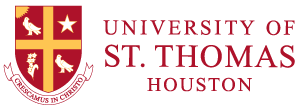The University of St. Thomas now offers a new Bachelor of Applied Arts and Science (BAAS) in Social Innovation and Human Service for graduates of the Associates of Applied Science in Pragmatic Studies program.
Specifically created for students with learning differences, the BAAS program will provide much needed opportunities for non-traditional college students to have a meaningful and purposeful college experience that results in a bachelor's degree.
Graduates will be able to pursue jobs in the community service fields of HR, customer service, urban planning, working with nonprofits—anything that deals with community endeavors and social enrichment.
